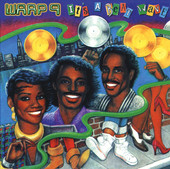Old-school hip hop is the earliest commercially recorded hip hop music and the original style of the genre. It typically refers to the music created around 1979 to 1983, as well as any hip hop that does not adhere to contemporary styles.
Electro is a genre of electronic dance music directly influenced by the use of the Roland TR-808 drum machines, with an immediate origin in early hip hop and funk genres. Records in the genre typically feature heavy electronic sounds, usually without vocals; if vocals are present, they are delivered in a deadpan manner, often through electronic distortion such as vocoding and talkboxing. It palpably deviates from its predecessor boogie by being less vocal-oriented and more focused on electronic beats produced by drum machines.
Kurtis el Khaleel, known by the stage name Kurtis Mantronik, is a Jamaican-born hip hop and electronic-music artist, DJ, remixer, and producer. He was the leader, DJ, and keyboardist of the influential 1980s hip hop and electro-funk group Mantronix. He currently lives in South Africa where he has produced and remixed house and techno music tracks by artists such as India, Junior Senior, Kylie Minogue, Fatboy Slim, The Chemical Brothers, Michael Gray, Victoria Beckham, Liberty X, S Club, and Mim. Mantronik was influential in the development of hip hop music: notably, he laid the foundations for Southern hip hop genres such as Miami bass and trap music, and helped popularize the Amen break.

Whodini is an American hip hop group that was formed in 1982. The Brooklyn, New York–based trio consisted of vocalist and main lyricist Jalil Hutchins; co-vocalist John Fletcher, a.k.a. Ecstasy ; and turntable artist DJ Drew Carter, a.k.a. Grandmaster Dee.

Brenda Joy Kaplan, known by her stage name Brenda K. Starr, is an American singer and songwriter. She is well known originally in R&B, dance and pop but now mostly in salsa-based music. She is also well known for her 1980s work with freestyle music.

Yellow Magic Orchestra is the first official studio album by Japanese electronic music band Yellow Magic Orchestra, who were previously known as the Yellow Magic Band. Originally released by Alfa Records, in Japan in 1978, the album was released by A&M Records in Europe and the United States and Canada in early 1979, with the US version featuring new cover art but without the closing track of "Acrobat". Both versions would later be re-issued in 2003 as a double-disc format, with the American version as the first disc.
Manuel Parrish is an American songwriter, vocalist and producer. He, along with artists such as Yellow Magic Orchestra, Kraftwerk, Art of Noise, Arthur Baker, Afrika Bambaataa, John Robie, Jellybean Benitez, Lotti Golden, Richard Scher and Aldo Marin, helped create and define electro in the early 1980s.

Hip hop production is the creation of hip hop music in a recording studio. While the term encompasses all aspects of hip hop music creation, including recording the rapping of an MC, a turntablist or DJ providing a beat, playing samples and "scratching" using record players and the creation of a rhythmic backing track, using a drum machine or sequencer, it is most commonly used to refer to recording the instrumental, non-lyrical and non-vocal aspects of hip hop.
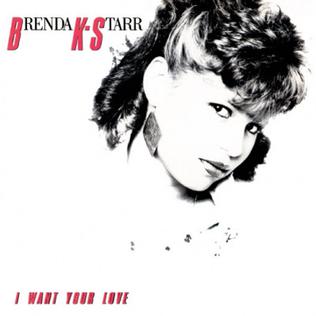
I Want Your Love is the debut album by American dance/pop singer, Brenda K. Starr. While it was a small label release on Mirage Records, distributed by Atlantic Records, It featured her first Freestyle music hit, "Pickin' Up Pieces," which peaked at #9 on the Hot Dance Music/Club Play chart in 1986. Other noteworthy songs on the album include "Love Me Like The First Time", which would be recorded soon after by r&b/soul artist Stacy Lattisaw. While contemporary listeners will liken this album to the similar style of Latin Freestyle, many of the songs were produced in a sleeker, more polished, electro style. While the album itself was not a blockbuster success, Starr soon found herself on MCA Records for the release of her second, self titled, studio album.
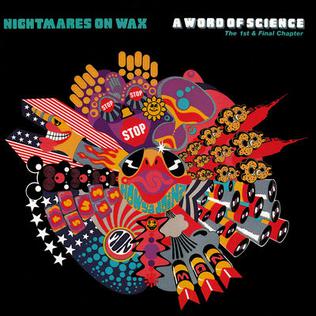
A Word of Science is the debut studio album by British electronic producers Nightmares on Wax. Released by Warp Records in September 1991, it is the act's only album as a group before it became a solo vehicle for George Evelyn. Evelyn nonetheless recorded and produced the album alone, incorporating samples and elements from demo tapes he made in the late 1980s. Although Nightmares on Wax debuted with two well-received techno singles in 1989-1990, A Word of Science is eclectic and largely moves the act towards a more mellow style influenced by funk, soul and hip hop, while still incorporating techno, drum and bass, and house styles.

DJ-Kicks: Chicken Lips is a DJ mix album, mixed by Chicken Lips. It was released on 3 November 2003 on the Studio !K7 independent record label as part of the DJ-Kicks series.
Hip-hop or hip hop, formerly known as disco rap, is a genre of popular music that emerged in the late 1960s and early 1970s primarily from African American, Afro-Latin, and Afro-Caribbean musical aesthetics practiced by youth in the South Bronx. Hip-hop music originated as an anti-drug and anti-violence social movement led by the Afrika Bambaataa and the Universal Zulu Nation. The genre is characterized by stylized rhythmic sounds—often built around disco grooves, electronic drum beats, and rapping, a percussive vocal delivery of rhymed poetic speech as consciousness-raising expression. The music developed as part of the broader hip-hop culture, a subculture defined by four key stylistic elements: MCing/rapping, DJing/scratching with turntables, breakdancing, and graffiti art or writing. Knowledge is sometimes described as a fifth element, underscoring its role in shaping the values and promoting empowerment and consciousness-raising through music. In 1999, emcee KRS-One, often referred to as "The Teacher," elaborated on this framework in a Harvard lecture, identifying additional elements that extend beyond the basic four. These include self-expression, street fashion, street language, street knowledge, and street entrepreneurialism, which remain integral to hip-hop's musical expression, entertainment business, and sound production. Girls’ double-dutch was also recognized as a key stylistic component of breakdancing, according to KRS. While often used to refer solely to rapping and rap music, "hip-hop" more properly denotes the practice(s) of the entire subculture. The term hip-hop music is sometimes used synonymously with the term rap music, though rapping may not be the focus of hip-hop music. The genre also centers DJing, turntablism, scratching, beatboxing, and instrumental tracks.

"I Specialize in Love" is a song written by Lotti Golden and Richard Scher. Mixed by Tee Scott, the song was a club hit in the early 1980s when recorded by American singer Sharon Brown, the niece of songwriter Phil Medley. Released as a single in March 1982, by Profile Records, it spent three weeks at number two on the US Hot Dance Club Play chart, her only song to reach this survey. The single also charted on the UK Singles Chart, becoming an international club hit. A remixed version of the song was released in 1994, entering the UK Singles Chart for a second time.
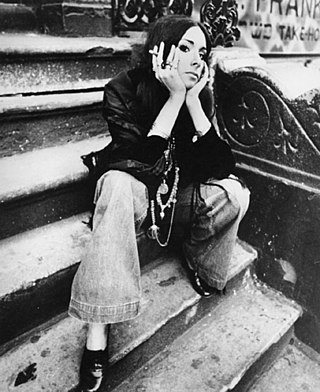
Lotti Golden is an American singer-songwriter, record producer, poet and artist. Golden is best known for her 1969 debut album Motor-Cycle, on Atlantic Records.
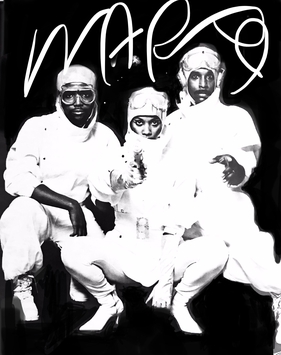
Warp 9, an American sci-fi themed electro-funk, hip hop group is best known for its ground breaking, influential singles including "Nunk," "Light Years Away," and "Beat Wave," which ranked among the most iconic groups of the electro hip hop era. Described as the "perfect instance of hip hop's contemporary ramifications," Warp 9 was the brainchild of writer-producers Lotti Golden and Richard Scher. The duo wrote and recorded under the moniker Warp 9, a production project at the forefront of the electro movement.

"Nunk" (also known as "Nunk (New Wave Funk)") the first single by the group Warp 9, released on Prism Records in 1982, was written and produced by Lotti Golden and Richard Scher. The song appeared as a vocal and instrumental version on the group's 1983 debut album It's a Beat Wave on Prism Records and 4th & Broadway records in the UK.

"Light Years Away" is the second single by the hip hop group, Warp 9, released in 1983. Written by Lotti Golden and Richard Scher and produced by Lotti Golden, Richard Scher, and John "Jellybean" Benitez, the song appears on the group's debut album It's a Beat Wave charting on the Billboard R&B and dance charts.
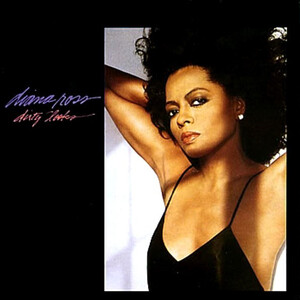
"Dirty Looks" is a song from the 1987 album Red Hot Rhythm & Blues by Diana Ross. It was written by Lotti Golden and Richard Scher, and produced by Tom Dowd. It was also released as the album's lead single on April 29, 1987, by RCA and EMI. The song, which peaked at #12 on Billboard's Hot R&B Singles, originally appeared on Warp 9's second LP on Motown, Fade in, Fade Out. The European releases of Red Hot Rhythm & Blues features the short version of the song.

Convertibles is the debut studio album by American producer/rapper Chuck Inglish. The album was released on April 8, 2014, through Inglish's own Sounds Like Fun Records via Dave Sitek's Federal Prism Records. Co-produced by Inglish and Incubus' Mike Einziger, the 13-track project features collaborations with Chance the Rapper, Action Bronson, BJ the Chicago Kid, Ab-Soul, and Mac Miller amongst others, along with fellow Cool Kids member Sir Michael Rocks and Canadian electro funk duo Chromeo.
